Journey to the Center of the Earth (1959 film)
7.6 /10 1 Votes
81% Rotten Tomatoes Genre Adventure, Family, Fantasy Duration Language English | 7/10 IMDb Director Henry Levin Country United States | |||||||||||||||||||||||||||||||||
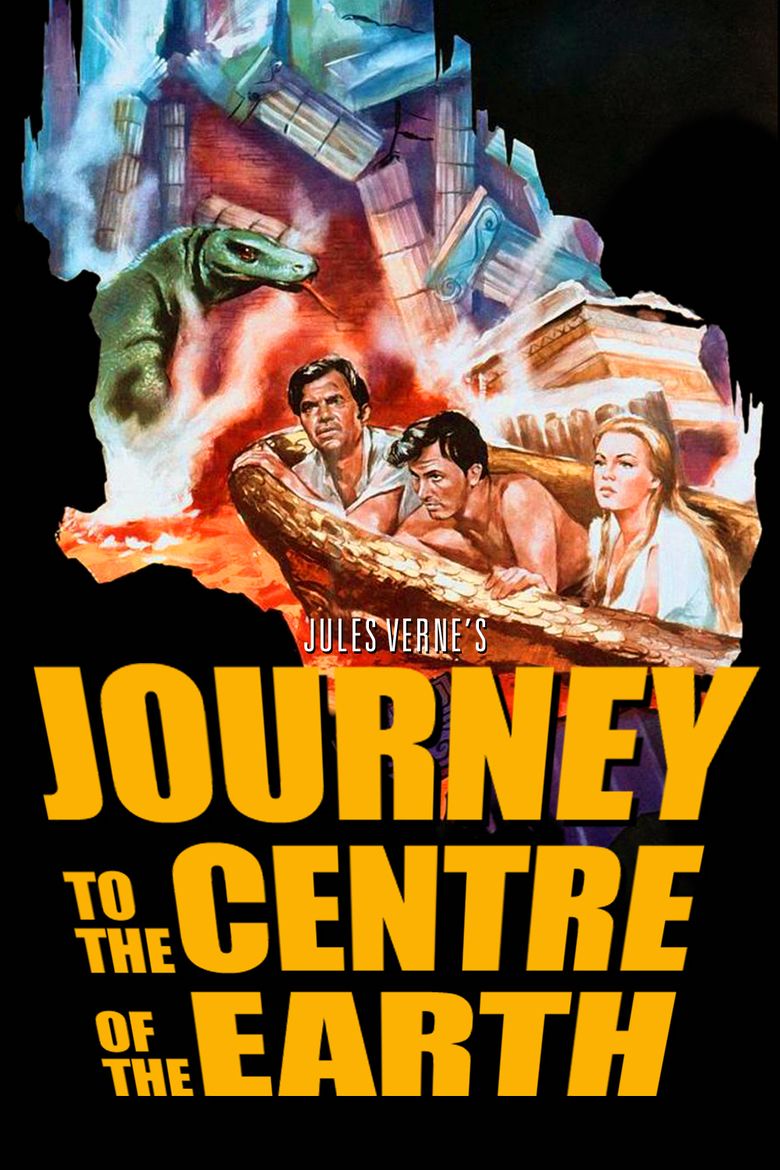 | ||||||||||||||||||||||||||||||||||
Release date December 16, 1959 (1959-12-16) Adapted from Journey to the Center of the Earth Cast (Alexander 'Alec' McKuen), (Sir Oliver S. Lindenbrook), (Carla Göteborg), (Jenny Lindenbrook), (Count Saknussem), (Hans Belker) Similar movies Journey to the Center of the Earth , Ice Age , We're Back! A Dinosaur's Story , Journey to the Center of the Earth , When Dinosaurs Ruled the Earth , Dinosaur Tagline A fabulous world below the world | ||||||||||||||||||||||||||||||||||
Journey to the center of the earth original movie trailer 1959
Journey to the Center of the Earth (also called Jules Verne's Journey to the Center of the Earth) is a 1959 adventure film adapted by Charles Brackett from the novel of the same name by Jules Verne. Journey to the Center of the Earth was directed by Henry Levin and stars James Mason, Pat Boone and Arlene Dahl.
Contents
- Journey to the center of the earth original movie trailer 1959
- Plot
- Production
- Box Office
- Critical
- Academy Awards
- Comic book adaption
- References
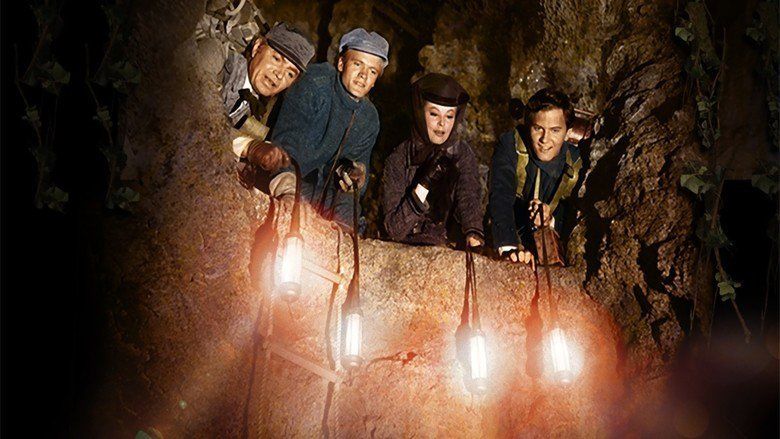
Plot
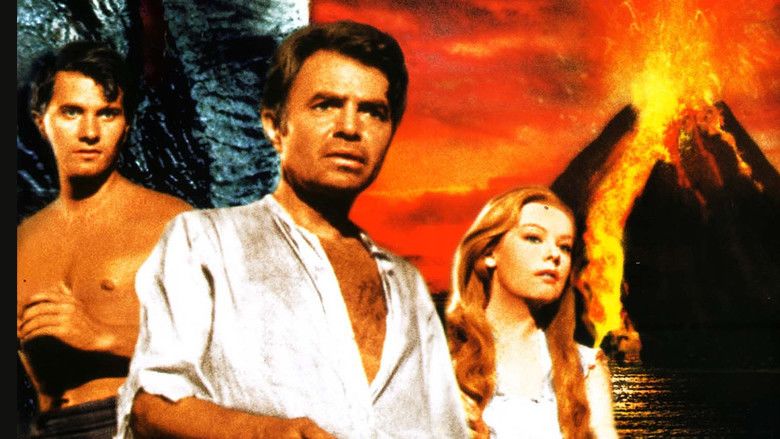
In Edinburgh, Scotland, in 1880, Professor Sir Oliver Lindenbrook (James Mason), a geologist at the University of Edinburgh, is given a piece of volcanic rock by his admiring student, Alec McEwan (Pat Boone). Deciding that the rock is unusually heavy, Lindenbrook, mostly thanks to the carelessness of his lab assistant, Mr. Paisley (Ben Wright), discovers a plumb bob inside bearing a cryptic inscription. Lindenbrook and Alec discover that it was left by a scientist named Arne Saknussemm, who had, almost 300 years earlier, found a passage to the center of the Earth by descending into Snæfellsjökull, a volcano in western Iceland. After translating the message, Lindenbrook immediately sets off with Alec to follow in the Icelandic pioneer's footsteps.
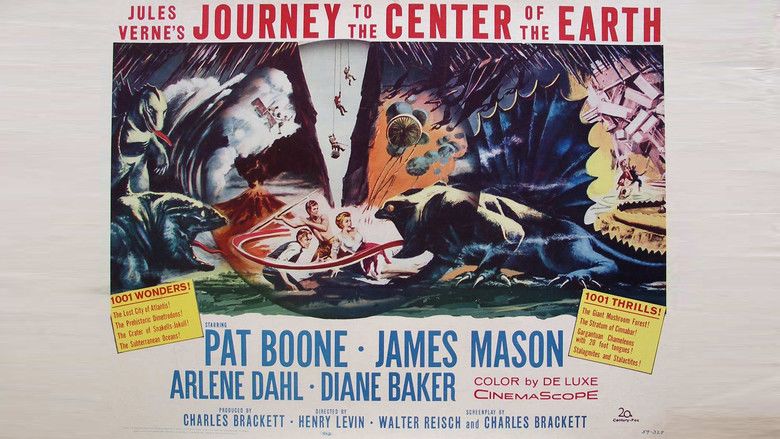
Professor Göteborg of Stockholm (Ivan Triesault), upon receiving correspondence from Lindenbrook regarding the nature of the message, opts to try to reach the Earth's center first. Lindenbrook and McEwan chase him to Iceland. There, Göteborg and his assistant kidnap and imprison them in a cellar. They are freed by a local Icelander, Hans Bjelke (Pétur Ronson), and his pet duck Gertrud. They find Göteborg dead in his room at an inn. Lindenbrook finds some potassium cyanide crystals in Göteborg's goatee and concludes that he has been murdered.
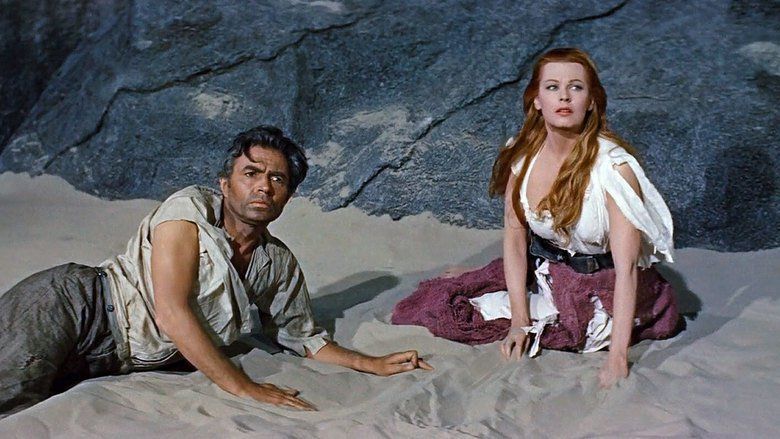
Göteborg's widow, Carla (Arlene Dahl), who initially believed Lindenbrook was trying to capitalize on the work of her deceased husband, learns the truth from her husband's diary. She provides the equipment and supplies Göteborg had gathered, including much sought after Ruhmkorff lamps, but only on condition that she go along. Lindenbrook grudgingly agrees, and the four explorers and the pet duck are soon journeying into the Earth.
They are aided by marks left by Arne Saknussemm showing the path he took 300 years before. However, they are not alone. Göteborg's murderer, Count Saknussemm (Thayer David) thinks that, as Arne Saknussemm's descendent, only he has the right to be there. He trails the group secretly with his servant. When Alec becomes separated from the others, he almost trips over Saknussemm's dead servant. When Alec refuses to be his replacement, Saknussemm shoots Alec in the arm. Lindenbrook locates Saknussemm from the reverberations of the sound of the shot, and sentences him to death. However, no one is willing to execute him, so they reluctantly take him along.
The explorers eventually come upon a subterranean ocean. They construct a raft from the stems of giant mushrooms to cross it, but not before narrowly escaping a family of dimetrodons. Their raft begins circling in a mid-ocean whirlpool. The professor deduces that this must be the center of the Earth because the magnetic forces from north and south meeting there are strong enough to snatch away even gold in the form of wedding rings and tooth fillings. Completely exhausted, they reach the opposite shore.
While the others are asleep, a hungry Saknussemm catches and eats Gertrud the duck. When Hans finds out, he rushes at the count, but is pulled off by Lindenbrook and McEwan. Reeling back, Saknussemm loosens a column of stones and is buried beneath them. Right behind the collapse, the group comes upon the sunken city of Atlantis. They also find the remains of Arne Saknussemm. The hand of his skeleton points toward a passage to the surface. They decide that they will have to break a giant rock blocking their way using gunpowder left by Saknussemm. A giant megalosaurus attacks them, but it is killed by released lava. They climb into a large sacrificial altar bowl which floats atop the lava to the passage, and are driven upward at great speed by the lava, reaching the surface through a volcanic shaft. Lindenbrook, Carla and Hans are thrown into the sea, while Alec lands naked in a tree in the orchard of a convent.
When they return to Edinburgh, they are hailed as national heroes. Lindenbrook, however, declines the accolades showered upon him, stating that he has no proof of his experiences, but he encourages others to follow in their footsteps. Alec marries Lindenbrook's niece Jenny (Diane Baker), and Lindenbrook and Carla, having fallen in love, kiss.
Production
The film was a co production between Fox and Joseph M. Schenck, who had been instrumental in helping establish Fox in 1935. The movie was produced by Charles Brackett who said:
Our picture describes action and events, with not the slightest shadow of Freud. The serious thing about Jules Verne is that all he does is tell a story in exciting episodes, but his stories have always pushed man a little closer towards the unknown. What we've tried to do is retell his story in the best way of all - in the Verne vernacular.
The script was written by Walter Reisch.
I had written a lot of science fiction for magazines, and Charles Brackett knew about that. They also knew that I had written magazine articles on Jules Verne. I had studied Jules Verne, and always wanted to write his biography, but I never got around to doing it. When they bought the Jules Verne novel from his estate and assigned me, I was delighted. The master's work, though a beautiful basic idea, went in a thousand directions and never achieved a real constructive "roundness." With the exception of the basic idea, there is very little of the novel left in the film. I invented a lot of new characters—the Pat Boone part, the part of the professor's wife played by Arlene Dahl, the [part of the] villain—and the fact that it all played in Scotland.
Pat Boone was the first star announced. He says he was reluctant to make the film because it was science fiction, even after Fox promised to add some songs. It was only when they offered him 15% of the profits that he agreed at the urging of his management. He said, "Later on, I was very glad I did it, because it was fun to do, it had some good music and it became a very successful film."
The role of the professor was meant to be played by Clifton Webb. Reisch:
That was absolutely the most beautiful idea, because Clifton Webb had a certain tongue-in-cheek style, suited to playing a professor with crazy notions, which could be paired with Pat Boone as his favorite disciple. Every week Clifton visited Brackett's office, where we described scenes to him and he became very excited at the prospect of playing that kind of part. Maybe two or three weeks before we actually began to shoot, Clifton Webb went to the hospital for a checkup, and they never let him out. He had to undergo major surgery. Unless my memory fails me completely, it was a double hernia, and he was, as you can imagine, a very sensitive man, very touchy about sickness. He called Zanuck himself on his private line, and said he could not play the part because it was such a physical part.
Webb was replaced at the last minute by James Mason, who had previously appeared in an earlier adaptation of a Jules Verne work, 20,000 Leagues Under the Sea (1954). Reisch:
I think it was [longtime head of Twentieth Century-Fox casting] Billy Gordon or Lew Schreiber [Twentieth Century-Fox production executive] who suggested James Mason. James Mason was, of course, British, with a beautiful voice, and he liked the idea [of the part]. He felt it was his duty as Clifton's colleague to take over. From there on it was clear sailing, except that Pat Boone had about three or four songs, if not more, and I think all of them died in the end, with the exception of one or two. The moment that Zanuck saw [their effect on] the action, those songs just fell by the wayside.
Some of the underground sequences for Journey to the Center of the Earth were filmed at Carlsbad Caverns National Park. Other shooting locations included Amboy Crater and Sequit Point, California, as well as Edinburgh, Scotland. Principal photography took place from late June to mid-September 1959.
Originally, Life magazine editor and science writer Lincoln Barnett was to write the screenplay and later acted as one of the technical advisers on the film.
The giant Dimetrodons depicted at the center of the Earth action sequence were actually rhinoceros iguanas with large, glued-on make-up appliances added to their backs. The giant chameleon seen later in the ruins of Atlantis scene was actually a painted Tegu lizard.
Boone recalled filming the climax:
James Mason, Arlene Dahl, Peter Ronson and I were on a raft, caught in a giant whirlpool. It was a tricky thing to shoot — the raft was on a revolving platform that tilted when it went around. It had to look like we were being tossed violently. Hundreds of gallons of water were being dumped on us to simulate a stormy sea. The noise was deafening, but not enough to drown out Dahl, who started screaming as she held on for dear life. She screamed at the director, Henry Levin, ‘Get me off this thing. Get me down. I’m going to pass out!’ She kept yelling. Mason had little patience for it. He thought Dahl had already overplayed the role of a dainty creature when we had to wear very heavy parkas, feigning winter amid very hot July weather, for another scene (Dahl complained then of heat prostration). Mason was not amused as this time he yelled back at her, ‘Shut up woman! We’re going to have to do this ten times if you don’t keep quiet.’ We were going to have to dub dialogue anyway, and they got the shot.
Dahl became unconscious and it took 30 minutes to revive her.
Box Office
At the time of release, Journey to the Center of the Earth was a financial success, grossing $5,000,000 at the box office (well over its $3.44 million budget).
Critical
At the time, New York Times film critic Bosley Crowther said Journey to the Center of the Earth) is "... really not very striking make-believe, when all is said and done. The earth's interior is somewhat on the order of an elaborate amusement-park tunnel of love. And the attitudes of the people, toward each other and toward another curious man who happens to be exploring down there at the same time, are conventional and just a bit dull."
Ian Nathan, writing for Empire, gave the film four stars, stating that "it has dated a fair bit, but it’s a film that takes its far-fetchedness seriously, and delivers a thrilling adventure untrammelled by cheese, melodrama or ludicrous tribes of extras, shabbily dressed bird-beings or lizard men", ultimately concluding that the film is "still captivating despite the obviously dated effects".
At the film review aggregator website Rotten Tomatoes, 83% of critics gave Journey to the Center of the Earth a positive review, with the general consensus being that Journey to the Center of the Earth is "a silly but fun movie with everything you'd want from a sci-fi blockbuster – heroic characters, menacing villains, monsters, big sets and special effects."
Academy Awards
Journey to the Center of the Earth was nominated for three Academy Awards for Best Art Direction-Set Decoration (Lyle R. Wheeler, Franz Bachelin, Herman A. Blumenthal, Walter M. Scott, Joseph Kish), Best Effects, Special Effects and Best Sound (Carlton W. Faulkner). It won a second place Golden Laurel award for Top Action Drama in 1960.
Comic book adaption
References
Journey to the Center of the Earth (1959 film) WikipediaJourney to the Center of the Earth (1959 film) IMDbJourney to the Center of the Earth (1959 film) Rotten TomatoesJourney to the Center of the Earth (1959 film) themoviedb.org
